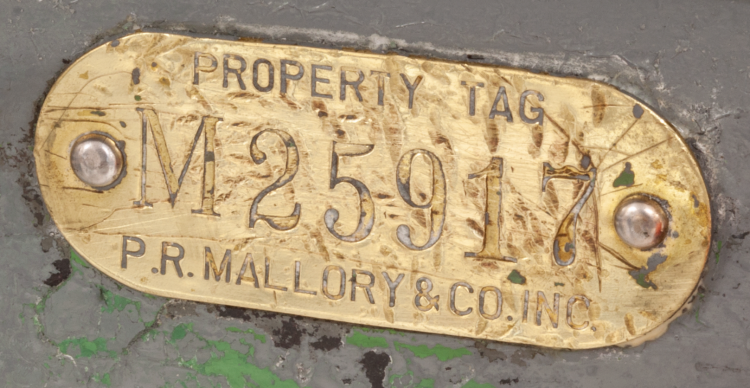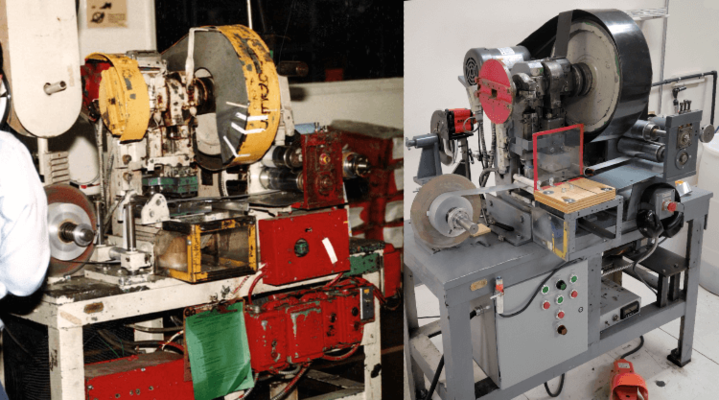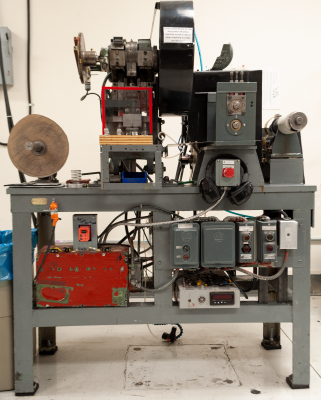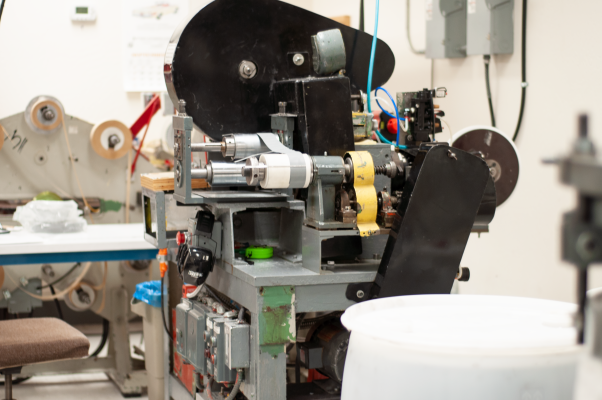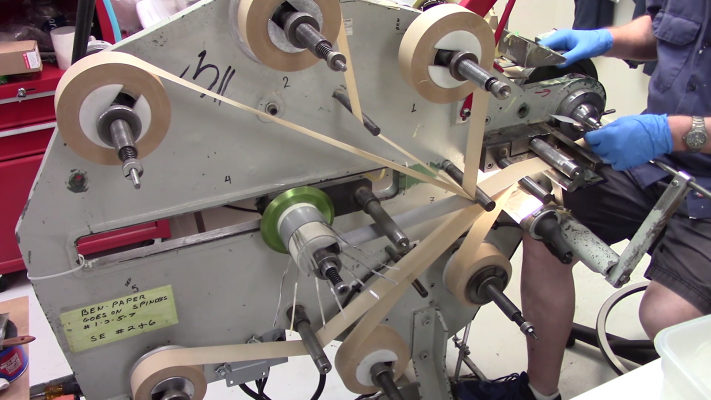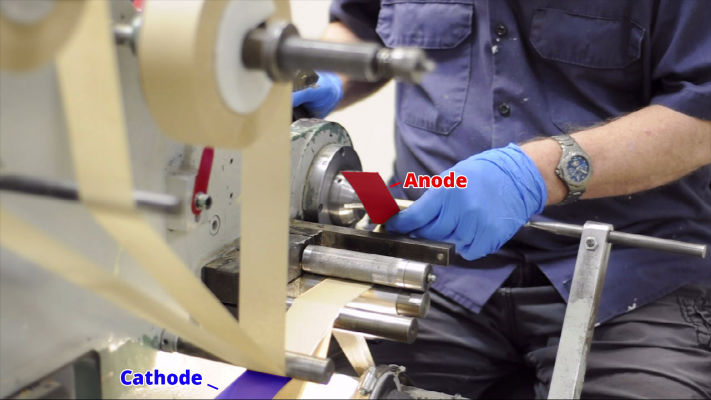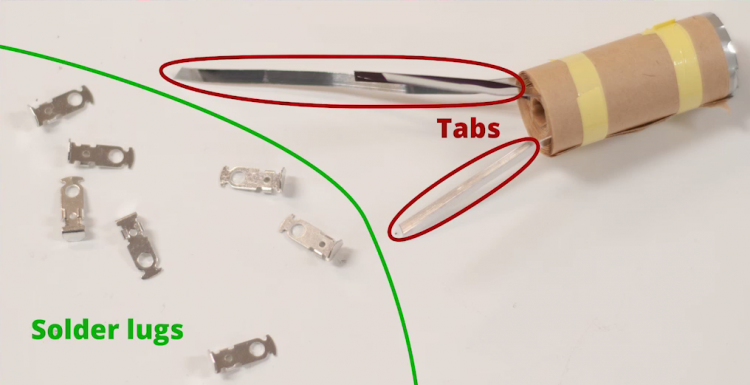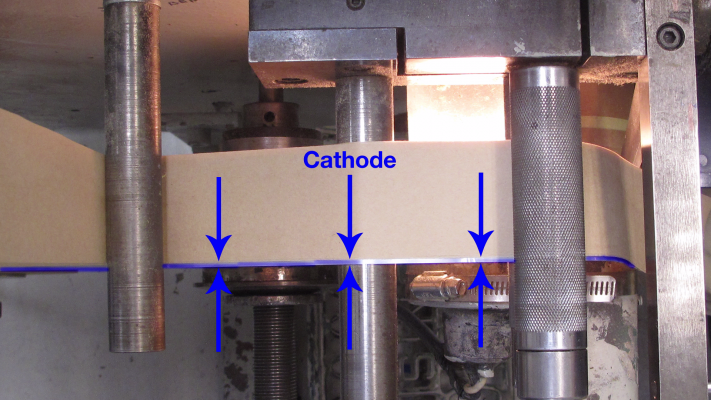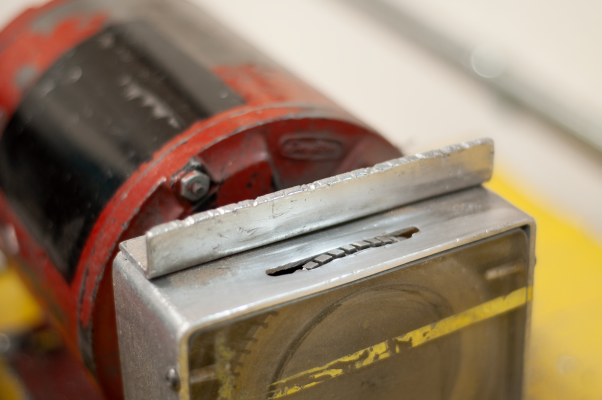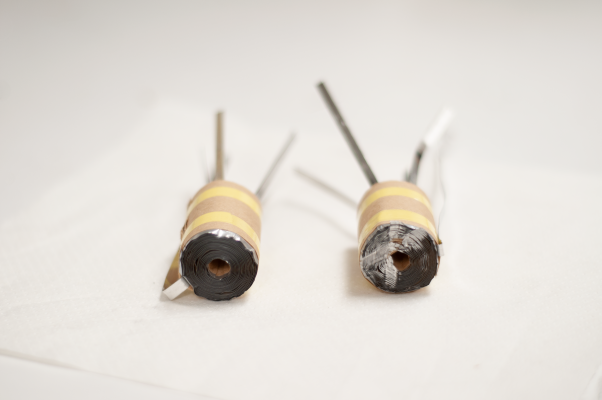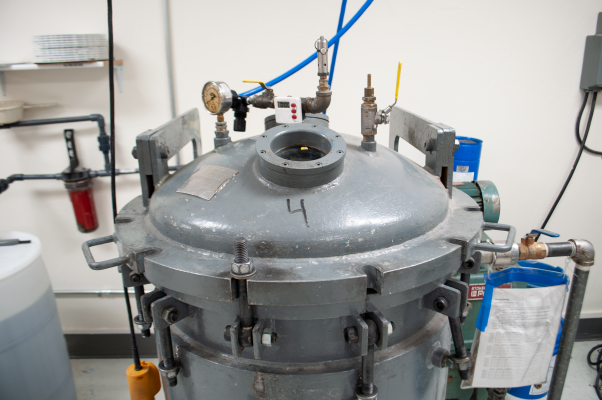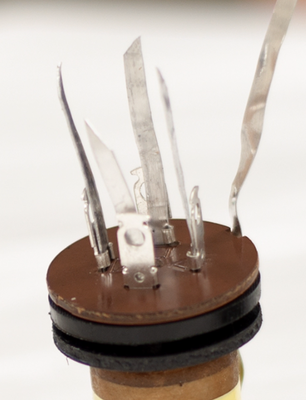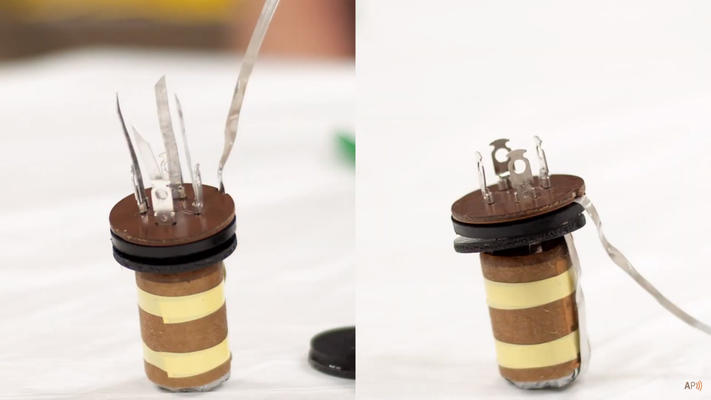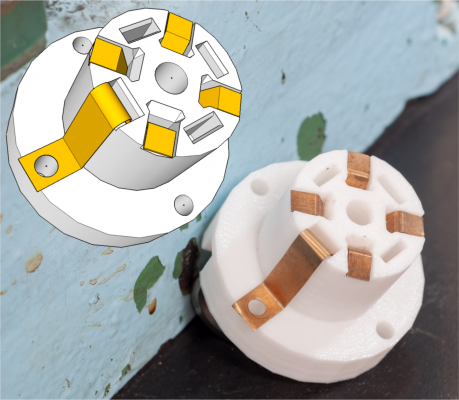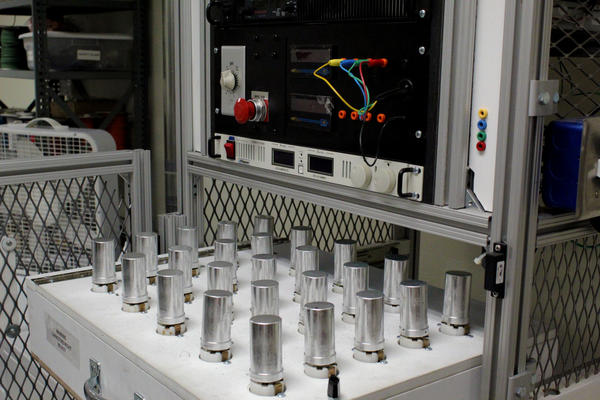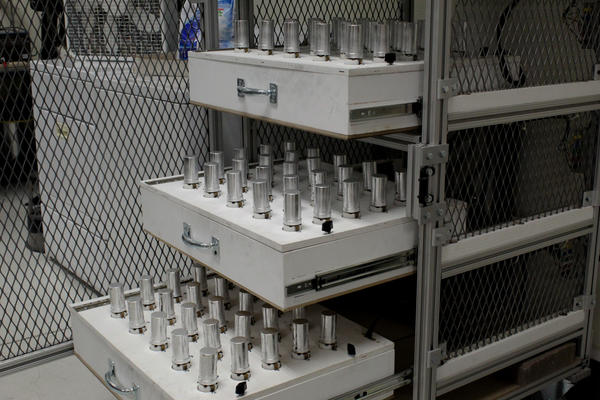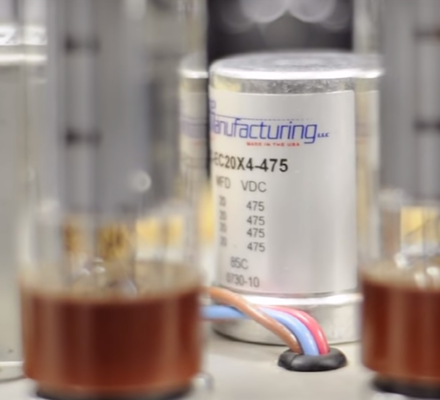CE Manufacturing® multi-section electrolytic "can" capacitors are made with original vintage Mallory (P.R. Mallory & Co. Inc.) machinery. Mallory began using this machinery to manufacturing can capacitors in the early 1920s under the Mallory Capacitor Company.
CE Manufacturing® purchased this equipment over 25 years ago from a factory in Mexico and brought it to the United States. Here, CE Manufacturing makes and tests every can capacitor by hand on this original equipment. Our on-site mechanic has kept this machinery in top conditions and running smoothly for the last 25 years.
Originally, CE Manufacturing® made only a few can capacitors - only the popular values. Today, CE Manufacturing® produces over 30 different types of can capacitors.
Read on to discover our manufacturing process!
Step 1: Creating the Anode and Cathode
The first step in the process of producing our capacitors takes place on a piece of machinery known as the stamping machine.
Using this machine, sections of anode and cathode are stamped, attaching tabs to each of these sections. Each of our can capacitors will require multiple anode and one cathode.
Step 2: Winding
Next, these sections of anode and cathode are taken to the winding machine.
This machine takes sections of anode and puts them in-between craft papers around the cathode. This is a very delicate process which is performed by hand..
The ultimate result of this process is a finished capacitor winding with attached tabs. These tabs will ultimately be welded to the solder lugs which attach to the user's equipment later in the process.
Step 3: Swaging
In every can capacitor we make, the cathode section is a little bit longer than the anode and kraft paper. The cathode foil sticks out of the top of the winding.
The fact that the cathode is longer allows us to connect it together over the top of the winding. In the swaging process, we fuse the longer cathode together so that they are touching one another. The term swage comes from the forging process by which the dimensions of an item are altered by forcing an item through a die. This process reduces the ohmic resistance and the inductive effects in the cathode cartridge.
The swaging machine consists of a simple motor and a crude blade. Forcing the top of the cathode windings against the blade presses the cathode coils over and fuses them together.
Step 4: Electrolytic Impregnation
Now that windings have been swaged, we impregnate them with electrolyte using the impregnation chamber.
Dry windings are placed in the chamber and the chamber is sealed. We place a vacuum on the chamber, drawing electrolyte into the chamber, submerging the windings in the electrolyte. Windings are submerged in the electrolyte under vacuum for a period of time. This forces the electrolytic into the windings, completely saturating the kraft paper.
Finally, we release the pressure and allow the windings to soak under normal atmospheric pressure. The saturated windings are then removed from the chamber. The process takes approximately an hour, and the final result is that the dialectric material (craft paper) is completely saturated with electrolyte.
The newly-saturated capacitor cartridges are now soaked with electrolytic both inside and outside. This electrolytic is slick and difficult to handle, so the windings are placed into a centrifuge (lovingly called the “salad spinner” by CE Manufacturing® employees) and spun to remove excess electrolytic and make the capacitors easier to handle.
Step 5: Cap and Gasket Assembly
The gasket assembly is made with soft rubber on one side and rigid plastic on the other. The anode tabs and the cathode tab are fed through the rubber gasket. Once the gasket is in place, the cap is added. The cap holds the solder lugs and is stamped with the section markings (square, moon, triangle, and blank).
Step 6: Crimping and Welding
Next, the crimping machine is used to cut the anode and and tightly attach the solder lugs to the anode tabs of the capacitor. After these lugs have been attached, they are then welded into place, alongside the locating ring which is also welded in place.
Step 7: Canning
In the final step of physically building the capacitor, the capacitor winding assembly is inserted into an aluminum can. The winding must be secured in the can to ensure it cannot move and come into contact with the can. This is accomplished by partially filling the can with hot potting tar.
The capacitor winding assembly is then inserted into the can containing this hot tar, locking it in place and electrically isolating it from the can itself. This assembled can/winding combination is then inserted into the sealing machine, which compresses the cap and gasket, sealing it in place and finishing the can.
Step 8: Forming the Capacitors
The physical construction of the capacitor is now complete, but it is not ready for service just yet. A capacitor must have an anode (or anodes) and a cathode and a dielectric, or insulator between the anode and cathode. The kraft paper and electrolyte do not yet constitute a dielectric. The kraft paper is simply material to hold the electrolyte and the dielectric must now be "formed" by application of high voltage to the capacitor. This forming process creates an extremely thin layer of aluminum oxide dielectric.
In order to form the capacitors, a custom-built modern forming rack is used. This machine was designed and built here in-house at CE Manufacturing. It is designed to mimic the functionality of the original equipment used for the production of these capacitors, but with modern improvements to the design to ensure better results. The dedication to original design runs so deeply here at CE Manufacturing that we individually modeled and 3D printed exact duplicates of the original test sockets for use in this new forming rack!
This machine can age two different voltage sections of 100 capacitors at a time. For four hours, the capacitors will remain in the rack. Once the forming process is complete, the capacitors come off the rack ready for use as capacitors!
Step 9: Quality Control
The capacitors may be working, but that is by no means the final step. After forming, the capacitors go to quality control to ensure they are performing to the standards that we expect here at CE Manufacturing. Each capacitor is individually tested for capacitance, resistance, and shorts.
After passing quality control, the capacitors are finally cleaned and labeled, making them ready for use in your equipment!
